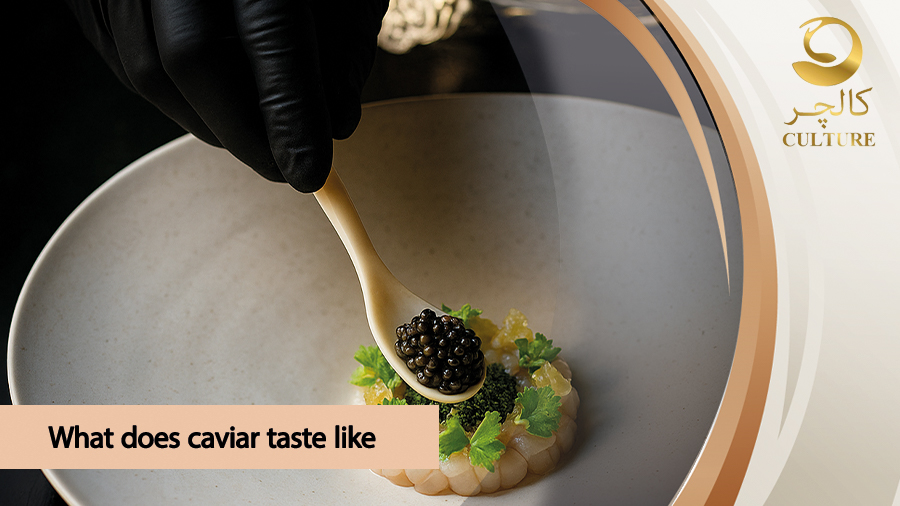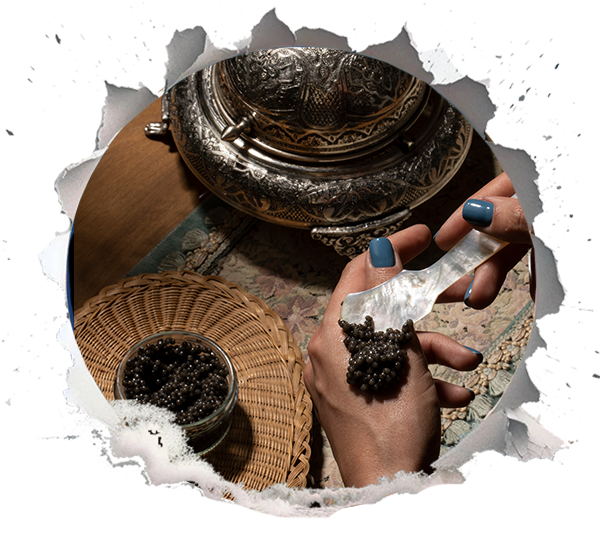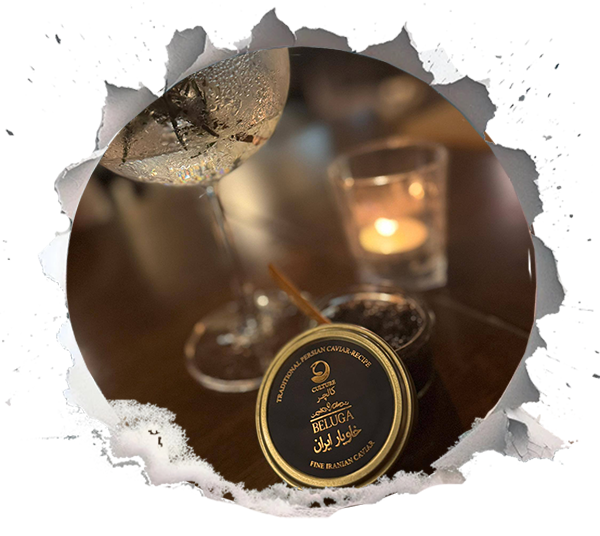What does caviar taste like?

Caviar is a special food that many people love. It comes from fish eggs, mainly from sturgeon fish. If you have never tried it, you might wonder about the taste of caviar. The truth is, caviar has a unique flavour that is hard to describe fully because it can vary. But most people say it tastes like the sea, a bit salty, fresh, and sometimes buttery or nutty. It is not too fishy if it is good quality. Once you try it, you might want more, just like many caviar fans do. In this guide, we will explain what caviar tastes like in simple terms. We will look at why it can taste different each time, the main types, and how it fits into your food. We’ll also talk about farmed caviar, which is a sustainable way to make it.
A Short History
Caviar has a long history that goes back thousands of years. The word “caviar” comes from Persian and entered English in the late 1500s. It was first eaten by people around the Caspian Sea, like the Persians. They saw sturgeon eggs as a treat and even thought they had health benefits. By the Middle Ages, caviar reached Europe and became popular with kings and rich people. In Britain, sturgeon were called “royal fish” because only the king could claim them.
In Russia, tsars served caviar at big feasts. It spread across Europe as a sign of wealth. During the 1800s and 1900s, wild sturgeon from the Caspian Sea supplied most of the world’s caviar. But overfishing led to bans on wild caviar trade in many places. Now, most countries use farmed caviar. Countries like Italy, Russia, Iran, and China make high-quality caviar. This shift to farming has made caviar more available and sustainable.
Today, caviar is enjoyed across Europe, from fancy restaurants in Paris to home meals in Germany. It is part of celebrations and fine dining. Brands like Culture Caviar focus on Iranian-sourced, high-quality products that respect this history while looking to the future.
What Is Caviar?
Caviar is the salted eggs, or roe, from sturgeon fish. Pristine caviar comes from sturgeon, but some people use the word for other fish eggs, too, like salmon or trout. The eggs are cleaned, salted, and packed carefully. This process gives caviar its special taste and texture. The texture is important. Good caviar has eggs that pop in your mouth, releasing flavour. They are soft but firm, not mushy. The colour can be black, grey, golden, or red, depending on the type.
What Does Caviar Taste Like?
Describing caviar’s taste is tricky because it is personal. But from what experts and eaters say, it is often buttery, creamy, and a bit salty with hints of the ocean. It has a fresh fish note, but not strong like some seafood. Some say it tastes like seawater with a nutty finish. Others describe it as rich and juicy, sometimes sweet or like oysters but bolder. For beginners, it might seem salty at first. But as you eat more, you notice subtle differences. High-quality caviar is smooth and mild, not overpowering. It leaves a clean taste in your mouth. If it is too fishy or bitter, it might not be fresh. In Europe, caviar is often paired with simple foods to let its taste shine. For example, in France, it is served with blinis and crème fraîche.

Why Does Caviar Taste Different?
Caviar does not always taste the same. There are many reasons for this. First, there are about 27 species of sturgeon, and each gives a unique flavour. Even from the same fish, taste can vary based on:
- The fish’s health – Healthy fish make better eggs.
- Age and size – Older, bigger fish often have richer caviar.
- Where the fish lived – Water quality affects taste.
- Farmed or wild – More on this later.
- What the fish ate – Diet influences flavour.
- Water quality – Clean water means better taste.
- Harvest time and method – Proper timing keeps it fresh.
- Salt amount – Salt preserves but can change taste.
- Pasteurised or not – Heat can milden flavour.
- Fresh or frozen – Freezing might alter texture.
- Packaging – Good containers keep it fresh.
- Storage time – Longer storage can dull taste.
These factors make each batch special. In Europe, strict rules ensure high quality, especially in farmed caviar.
Does Caviar Taste Salty?
Yes, caviar has a salty taste, but it is usually mild. Fresh caviar gets a little salt to preserve it, not to make it too strong. It tastes like a hint of sea salt, balanced with other flavours. If it is very salty, it might be lower quality or over-salted. In good caviar, the salt enhances the natural taste without overpowering it. This makes it perfect for European dishes where balance is key.
Do All Types of Caviar Taste the Same?

No, different types have their own flavours. Here are some main ones:
- Beluga Caviar: From the Beluga sturgeon. It is creamy, buttery, and mildly nutty with a salty touch. The eggs are large and grey to black. It is smooth and delicious, and often the most expensive.
- Osetra (or Ossetra) Caviar: Popular worldwide. It has a complex taste – nutty, earthy, creamy, and sometimes sweet. Eggs are medium-sized, golden to brown. Great for beginners.
- Sevruga Caviar: From Stellate sturgeon. Affordable with a buttery flavour, sea salt notes, and brackish water hints. Small grey or black eggs, less fishy.
- Kaluga Caviar: Similar to Beluga, buttery and rich.
- Sterlet Caviar: Buttery and smooth.
- Hackleback Caviar: From American sturgeon, briny and nutty.
Other types like salmon roe (red caviar) are sweeter and poppier. In Europe, Osetra and Beluga are favourites in fine dining.
What Is Farmed Caviar?
Cultured caviar means caviar from farmed sturgeon, also called aquacultured. It is grown in controlled settings, not caught wild. This is sustainable and helps protect wild fish. Europe leads in this, with farms using clean water and good feed. Some new types are lab-grown, mixing fish cells with plants for a similar taste without killing fish. But most cultured caviar is from farms. It has consistent quality and mild flavour. Culture Caviar specialises in this, sourcing from top farms. It is fresh, ethical, and available across Europe. If you wonder about our process, we suggest you take a look at the Culture Caviar farm.
Is the Taste of Wild Caviar Different from Farmed Caviar?

Yes, there are differences. Wild caviar often has a stronger, more complex taste like the ocean, from varied diets and natural waters. It can be brinier and earthier. Farmed caviar is milder and more consistent because of controlled environments. It is cleaner and fresher, with less intensity. Both can be great, but farmed is more common in Europe due to bans on wild imports. Culture Caviar uses farmed methods for top taste without harming nature.
How Does Rotten or Fake Caviar Taste?
Good caviar tastes mild and ocean-like with slight salt. Rotten caviar smells strong and fishy, like bad protein. It might taste sour, metallic, or too fatty. If dark, slimy, or leaves mucus, throw it away; it can make you sick. Fake caviar, from other fish or imitations, is blander or too uniform. Real eggs vary in size and shine. Check labels for sturgeon origin. Culture Caviar ensures real, fresh product.
Conclusion
Caviar is a delightful food with a taste that mixes sea, salt, and creaminess. It varies by type and source, but always feels special. In Europe, from history to modern farms, it is a cherished part of meals. Farmed caviar makes it sustainable and available. If you want to try, visit Culture Caviar’s shop. We sell across Europe with top quality. New buyers get 10% off, a great way to start. Enjoy caviar simply or in recipes, and discover your favourite flavour.

